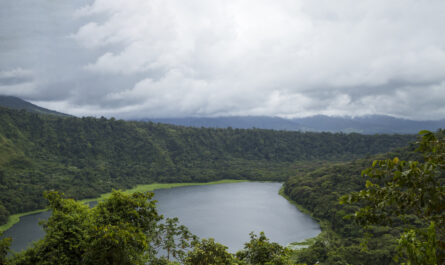Santa Isabel, the longest island in the Solomon Islands, is a hidden treasure of the Pacific. Known for its stunning natural beauty, vibrant culture, and secluded charm, this island offers a glimpse into a way of life deeply rooted in tradition and harmony with nature. Remote villages scattered across Santa Isabel have preserved their unique cultural heritage for centuries, providing visitors with an authentic experience of traditional living.
In this article, we delve into the traditional lifestyle of Santa Isabel’s remote villages, exploring their cultural practices, sustainable way of life, and the eco-tourism opportunities that help sustain these communities while protecting their environment.
1. The Geography of Santa Isabel and Its Villages
Santa Isabel stretches over 200 kilometers and is characterized by its rugged mountains, dense rainforests, pristine rivers, and extensive coastlines. Its remote villages are often accessible only by boat or footpaths, which has allowed the local communities to retain their traditional ways of life.
Isolation and Preservation
The geographical isolation of Santa Isabel’s villages has played a crucial role in preserving their cultural and environmental integrity. These villages are not just settlements but living embodiments of a sustainable way of life.
Biodiversity and Natural Wealth
Santa Isabel’s rainforests and coral reefs are teeming with biodiversity, making it a paradise for nature lovers. The island’s natural environment has shaped the daily lives and cultural practices of its people.
2. Cultural Practices in Santa Isabel’s Villages
Traditional life in Santa Isabel’s villages revolves around community, spirituality, and a deep respect for nature. These practices are deeply ingrained in the islanders’ way of life and offer a unique cultural experience for visitors.
Clan Systems and Community Structure
Villages in Santa Isabel are organized into clans, each with its own totems, legends, and traditions. These clans play a vital role in governance, conflict resolution, and social cohesion.
- Totems and Spiritual Beliefs: Totemic symbols, often animals or plants, hold spiritual significance and are central to many rituals and ceremonies.
- Oral Traditions: Storytelling is a cherished art, with elders passing down legends and historical events through generations.
Customary Ceremonies
Rituals and ceremonies mark key life events such as births, marriages, and deaths. These occasions are celebrated with traditional dances, feasts, and communal gatherings.
- Kastom Dances: Performed in traditional attire, these dances narrate stories of ancestors, nature, and life lessons.
- Feasts and Celebrations: Meals prepared with local ingredients are shared among the entire community, reflecting the islanders’ spirit of togetherness.
3. Traditional Living Practices
Living in harmony with nature is a hallmark of life in Santa Isabel’s remote villages. From food and shelter to medicine and crafts, every aspect of daily life is shaped by the island’s natural resources.
Sustainable Farming
Subsistence farming is the primary source of food for villagers. Crops like taro, yam, and bananas are cultivated using traditional methods that maintain soil fertility and minimize environmental impact.
- Shifting Cultivation: This method involves rotating plots to allow the land to regenerate naturally.
- Shared Gardens: Farming is a communal activity, with families working together and sharing the harvest.
Fishing and Marine Stewardship
Fishing is a cornerstone of life in Santa Isabel’s coastal villages. Traditional fishing techniques, such as spearfishing and hand-woven nets, ensure sustainability and respect for marine ecosystems.
- Customary Fishing Rights: Villages enforce traditional marine tenure systems, designating areas for fishing and conservation.
- Sustainable Practices: Catching only what is needed prevents overfishing and preserves marine biodiversity.
Craftsmanship
Villagers are skilled in crafting essential tools and decorative items from natural materials.
- Canoe Building: Dugout canoes, intricately carved from hardwood, are a vital means of transport and fishing.
- Weaving and Carving: Pandanus leaves and local timber are used to create mats, baskets, and ceremonial items.
4. Connection to Nature
Santa Isabel’s remote villagers have a profound connection to their environment. Their understanding of natural cycles and ecosystems informs every aspect of their lives, from food gathering to spiritual practices.
Traditional Medicine
Healers in the villages use medicinal plants to treat ailments. This knowledge, passed down through generations, reflects a deep understanding of the local flora’s healing properties.
Sacred Sites
Caves, groves, and other natural landmarks hold spiritual significance and are often associated with ancestral spirits. These sacred sites are protected and respected by the community.
5. Eco-Tourism: A Path to Preservation
Eco-tourism is emerging as a vital tool for preserving the culture and environment of Santa Isabel’s villages. By welcoming visitors in a controlled and sustainable manner, the islanders can generate income while safeguarding their heritage.
Village Stays
Eco-tourism initiatives offer visitors the chance to stay in villages and participate in daily activities such as fishing, farming, and traditional cooking. These immersive experiences foster cross-cultural understanding and provide economic benefits to the community.
Guided Nature Tours
Local guides lead eco-tours through the island’s rainforests, rivers, and coral reefs, sharing their knowledge of the environment and its significance to their culture.
Cultural Performances
Visitors can witness traditional dances, music, and ceremonies, offering an authentic glimpse into Santa Isabel’s cultural heritage.
Challenges and Opportunities
Eco-tourism brings both opportunities and challenges. While it provides much-needed economic support, it also requires careful management to avoid cultural commodification and environmental degradation.
6. Sustainability in Santa Isabel’s Villages
Sustainability is not just a concept but a way of life for the villagers. Their practices offer valuable lessons for a world grappling with environmental challenges.
Zero-Waste Living
Villagers utilize every part of their resources, from food and plants to materials for construction and crafts. This zero-waste approach minimizes environmental impact.
Community-Led Conservation
Villages collectively manage their natural resources, ensuring that fishing, farming, and hunting are carried out sustainably.
7. Visiting Santa Isabel’s Remote Villages
For travelers seeking an authentic and enriching experience, visiting Santa Isabel’s villages offers an opportunity to step into a world far removed from modernity.
Travel Tips
- Getting There: Santa Isabel can be accessed by boat or small aircraft from Honiara. Be prepared for basic transportation and accommodations.
- What to Bring: Visitors should pack light but include essentials such as sturdy footwear, mosquito repellent, and a reusable water bottle.
- Cultural Sensitivity: Respect local customs, dress modestly, and seek permission before taking photographs.
What to Expect
Life in Santa Isabel’s villages moves at a slower pace, offering a refreshing break from the fast-paced modern world. Visitors can expect warm hospitality, breathtaking natural beauty, and a chance to reconnect with the essentials of life.
8. The Global Significance of Santa Isabel’s Villages
Santa Isabel’s remote villages are more than just cultural and ecological treasures—they are a testament to the resilience and ingenuity of humanity. In a rapidly changing world, these communities demonstrate the value of living in harmony with nature.
Lessons for Sustainability
The villagers’ sustainable practices offer inspiration for addressing global environmental challenges. Their zero-waste lifestyle, community-led conservation, and respect for natural resources are models for sustainable living.
Cultural Preservation
By sharing their traditions with visitors, Santa Isabel’s villagers ensure that their cultural heritage is celebrated and preserved for future generations.
Conclusion: A Journey Into Tradition and Sustainability
Exploring traditional life in Santa Isabel’s remote villages is more than a journey—it’s an opportunity to witness a way of life that prioritizes community, sustainability, and a deep connection to nature. As you engage with the villagers, partake in their customs, and immerse yourself in their environment, you’ll gain a profound appreciation for their resilience and wisdom.
By visiting responsibly, travelers can contribute to the preservation of Santa Isabel’s culture and natural heritage, ensuring that these remote villages remain a source of inspiration and wonder for generations to come.



